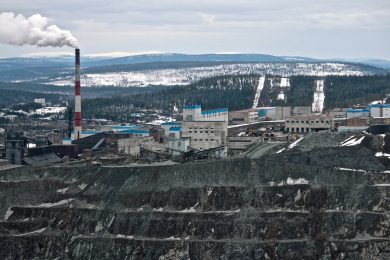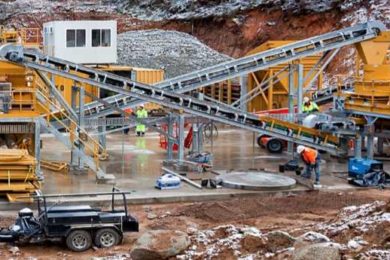In three papers presented recently at MEI’s Flotation ’17 conference in Cape Town, South Africa, BASF addressed both apatite and sulphide mineral flotation challenges. The first paper, Development of fatty acid modifier for beneficiation of the igneous apatite ores of Kovdor deposit by Kamkin/Michailovski/Alexandrov/Mikkola, stated that decreasing grades of processed phosphate ores is driving a search for effective chemicals to maintain beneficiation costs at an acceptable level.
“Stronger ecological legislation in many countries is also imposing restrictions on the use of alkylphenol ethoxylate (APEO) surfactants, which are known as effective modifiers for fatty acid collector systems in apatite flotation. A range of non-toxic and biodegradable APEO substitutes were developed by BASF. Using BASF’s range of modifiers, collector composition used for the direct flotation of igneous apatite of Kovdor deposits was optimised. During periods of laboratory, pilot and industrial trials, the influence of hydrophilic-lipophilic balance of the modifier on its selectivity, recovery and frothing ability was investigated. The outcome was the development of the optimal modifier composition in relation to specific conditions of Kovdorskiy GOK. Results of full-scale industrial trials showed a clear advantage in switching from incumbent APEO modifiers to BASF’s additive with simultaneous reduction of modifier consumption by 37% and increasing of P2O5 recovery by 2.5%.”
The second presentation, Experimental design to optimise BASF’S collector performance in apatite froth flotation, De Masi Neto/Budemberg/Davo explained how BASF’s Mining Solutions unit has developed a study to increase its collector’s performance in apatite flotation, “aiming at optimisation of the main parameters that influence the process and adjustment of the collector’s formula – guaranteeing the best composition. With the implementation of this tool, it was possible to achieve best performance with a reduced number of tests. The first study, adjusting the pH for 9,5, allowed two times more metallurgical recovery at rougher stage in comparison to the current collector/parameters. In the second project, the ideal collector formulation was defined. The behaviour of each additive and how the saponification influences in different compositions was elucidated and allowed the flotation optimisation.”
The third paper titled Performance characterisation of new frothers for sulphide mineral flotation by Chipfunhu/Dickie from BASF and Bournival/Ata from The School of Mining Engineering at The University of New South Wales, Sydney, Australia discussed the fact that more complex and low grade ore bodies require increasingly specialised flotation reagent suites to deliver the required separation efficiency of the valuable mineral from the gangue, and to maximise concentrate grade and recovery. “A new range of frother formulations have been developed by BASF’s Mining Solutions unit. These formulations have shown the ability to deliver improvements in grade of up to 4% at similar or improved valuable recovery in on-site test work of sulphide minerals and synthetic sulphide/quartz mixtures when compared with commonly used frothers such as MIBC at comparable concentrations. Fundamental test work characterizing foam stability, interfacial phenomena (e.g. coalescence time and bubble oscillation) time and particle detachment in the froth phase were conducted and used to explain the improved performance trends observed.”










